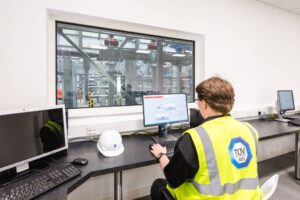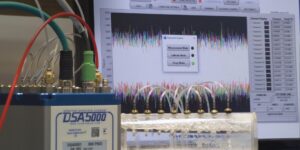TÜV SÜD National Engineering Laboratory (NEL) today launches NEL-SURE, a real-time software tool for the verification of subsea multiphase flow meters (MPFM), that will help operators to optimise reservoir management and revenues.
As the oil & gas industry exploits deeper fields, routine calibration is unviable due to the excessive cost of removing subsea MPFMs for laboratory-based validation. While MPFMs are calibrated before installation, laboratory-based flow regimes differ greatly to actual subsea conditions. Consequently, over time significant measurement errors result in fiscal loss, for both operators and taxation authorities.
NEL-SURE provides in-situ, continuous calibration of MPFMs and uses a traffic light system to alert operators to a meter’s health. The software can also accommodate a virtual meter to provide a secondary measurement for verification of the MPFM’s output. This will help to improve process and control decision making, increase productivity and safety, and reduce environmental impacts through the early identification of potential system failures.
Marc Laing, Head of Software & Modelling at TÜV SÜD National Engineering Laboratory, said: “While industry relies on MPFMs as inaccessible reservoirs are exploited, the lack of validation possibilities has impacted the accurate allocation and taxation of hydrocarbon assets. The challenge is to take the calibration process from the laboratory and move it to the ‘in situ’ location. This will ensure that flow meter verification accounts for the different effects of pressure, temperature and fluids at each individual well, allowing operators to have ongoing confidence in the measurements.
“NEL-SURE meets this challenge by reducing financial exposure and delivering operators increased confidence in the deployment and use of MPFMs. These intelligent meter health checks will save industry millions of pounds per year from unnecessary calibrations, maintenance and shutdowns,” concluded Laing.
NEL-SURE was developed at NEL’s Advanced Multiphase Facility, which has a test range (operating pressures, temperatures, flowrates and metrology) beyond the capability of any other laboratory in the world. As the UK’s National Measurement Institute for flow and density measurement, NEL has captured flow meter data over the last 30 years which has been used to develop NEL-SURE to be a completely impartial MPFM validation solution that is agnostic of any meter manufacturer.
 Instrumentation Monthly Test | Measurement | Control
Instrumentation Monthly Test | Measurement | Control











